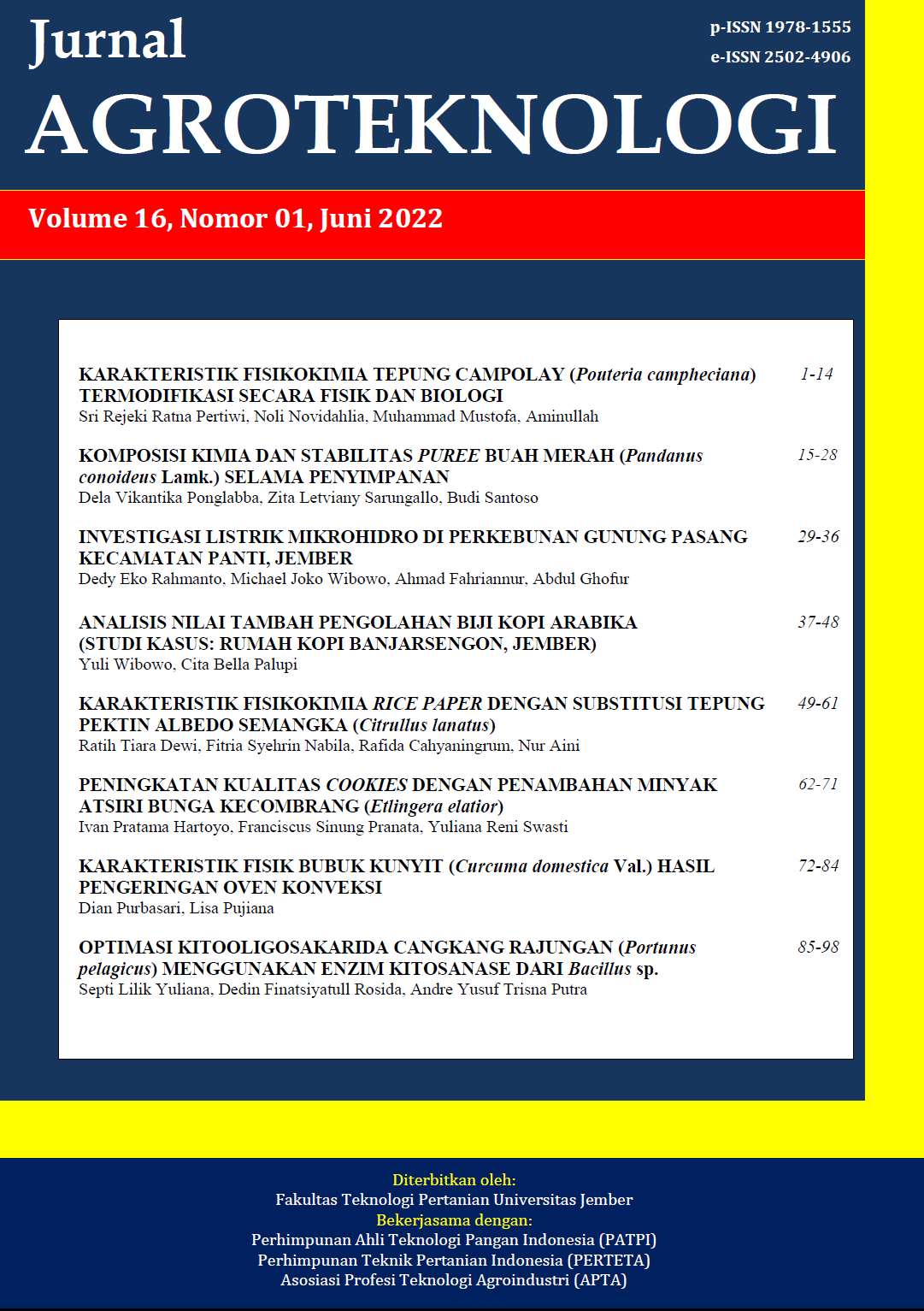KOMPOSISI KIMIA DAN STABILITAS PUREE BUAH MERAH (Pandanus conoideus Lamk.) SELAMA PENYIMPANAN
DOI:
https://doi.org/10.19184/j-agt.v16i01.26488Abstract
Red fruit (Pandanus conoideus Lamk.) is an endemic plant of Papua containing active components (carotenoids and tocopherols) as antioxidants and potential as a functional food. Until now, red fruit is only used for produce oil, while the information on the flesh of the fruit for raw materials of various food products is still limited, such as the chemical content, active components, and stability. The objectives of this study were to determine the nutritional composition and active components of red fruit puree and evaluate the stability of red fruit puree during storage. The puree of the red fruit was packed in a glass bottle and stored at room temperature (30±2°C) for 60 days to tested their quality stabilities. Parameters of color, aroma, taste, emulsion stability, viscosity, total dissolved solids, and acidity were observed on days 0, 10, 20, 30, 40, and 60 during storage. While total carotenoids were observed on days 0, 20, 40, and 60. The results showed that the nutritional content of red fruit puree in 100 g of dry weight included water content of 55.8%, ash content of 2.22%, fat content of 67.39%, protein content of 7.84%, and carbohydrate content of 22.56 %. Whereas, the active compounds, namely total carotenoids of 2003 ppm, β-carotenoids of 19 ppm, total tocopherol of 502 ppm, and ï¡-tocopherol of 371 ppm. During 60 days of storage, the color, aroma, taste, emulsion stability, total dissolved solids, and pH of red fruit puree were relatively stable. However, the viscosity was stable until day 40 and total carotenoids tended to decrease. This puree contains high carotenoids and tocopherols, so it has the potential as a functional food that is good for health.
Keywords: carotenoid, emulsion, functional food, tocopherol
Downloads
Downloads
Published
Issue
Section
License
Jurnal Agroteknologi has CC-BY-SA or an equivalent license as the optimal license for the publication, distribution, use, and reuse of scholarly work. Authors who publish with this journal retain copyright and grant the journal the right of first publication with the work simultaneously licensed under a Creative Commons Attribution-ShareAlike 4.0 International License that allows others to share the work with an acknowledgment of the work's authorship and initial publication in this journal.
 JURNAL AGROTEKNOLOGI
JURNAL AGROTEKNOLOGI 








.png)
